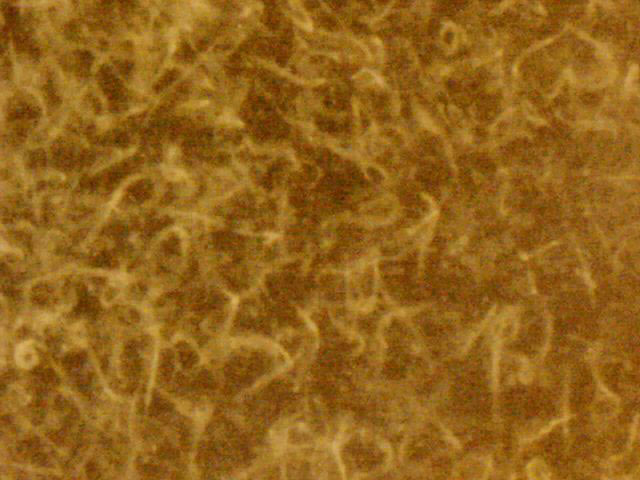Worms in Space to Study Microgravity

Atransparent roundworm could reveal the biological effects of microgravity and spaceradiation, and perhaps provide clues on how to protect future human astronautsheaded for the moon, Mars and beyond.
The C.elegans worm's biological responses proved eerily similar to thoseof humans during a series of experiments aboard the International SpaceStation in 2004. Now researchers have published a review of their findings inthe journal Advances in Space Research.
"Atleast at face value, this validates that you can use C. elegans to lookat mechanisms of muscleatrophy in spaceflight," said Nathaniel Szewczyk, a biomedicalresearcher at the University of Nottingham in the UK and member of the researchteam.
Szewczyksaid that the worms allow researchers to study both radiation and muscle healthproblems facing human astronauts, which remain poorly understood. Researcherscould even launch the worms on unmanned missions to future human destinationssuch as Mars, and remotely study the effects of long-termspaceflight.
Whymuscles get weaker
Researchershave long tried to figure out why long-term spaceflight can lead to weakenedmuscles in human astronauts. Many agree that microgravity conditions somehow reducethe rate at which new muscle proteins and fibers are created or synthesized.
"Rateof synthesis is down across all species [in spaceflight]," Szewczykexplained. "It doesn't matter if you're a worm, rat or human."
Get the Space.com Newsletter
Breaking space news, the latest updates on rocket launches, skywatching events and more!
C.elegans alreadyrepresents a modelorganism for study among biologists, along with other creatures such as theDrosophila fly. So it was an obvious choice when researchers fromCanada, France, Japan and the United States decided to combine forces for theInternational C. elegans Experiment, also known as ICE-FIRST.
A RussianSoyuz spacecraft launched 53 specimens to the space station in 2004.? Amatching set of roundworms stayed on Earth to act as the lab control.
ICE-FIRSTshowed a connection between weakened muscles and a reduced amount of a genetranscription factor which helps manufacture new muscle proteins. Thetranscription factor changes could in turn come from disruptions further up themolecular command chain, such as altered Insulin or TGF-beta signaling duringspaceflight.
Thisstrongly suggests that spaceflight affects the usual gene transcription processin which new proteins are made. However, researchers can't confirm a cause untilthey run more experiments where they actively block the transcription processto produce weakened muscles.
Besides,spaceflight may not only affect new muscle creation - it might also degrade orweaken existing muscle. There's less evidence for this, but it's a main focusfor Szewczyk. He wants to continue studying how typical muscle degradationoccurs on Earth, and also use future space experiments to examine the activityof enzymes called proteases, which degrade proteins.
Other spaceexperiments done by the Japanese and Chinese space agencies have sincereplicated and confirmed the muscle atrophy results from ICE-FIRST.
A livingradiation dosimeter
Anotherhealth challenge which ICE-FIRST addressed was the problem of harmfulradiation in space. Astronauts in low Earth orbit still get some protectionfrom the planet's magnetic field, but they are nonetheless exposed to increasedamounts of radiation.
Theroundworms showed that they could normally repair their radiation damaged cellsin spaceflight by using apoptosis, or the programmed cell death which can alsobe triggered by unusual amounts of damage. Researchers say that this makes themideal "living dosimeters" to track accumulated radiation damage overtime.
SinceICE-FIRST, another space station experiment successfully tested a fullyautomated culturing system which maintained the roundworms for six monthswithout human intervention. That could pave the way for future radiationstudies.
"Withthe radiation aspect, there's the idea of automating experiments and puttingthem on unmanned platform," Szewczyk explained. "We could actuallyput worms on an unmanned mission to Mars."
Still, ashift toward human rather than animal spaceflight experiments has squeezed the C.elegans studies. The original NASA program under which ICE-FIRST operatedhas been cancelled, although the U.S. space agency may once again be lookingfor "model organism" experiments, Szewczyk noted.
So just as fliesand monkeys once preceded man's first step into an unknown space environment, perhapscreatures such as C. elegans could once again blaze a path to moredistant planetary bodies in the solar system.
- Video - How Astronauts Work Out in Space
- Giant Moon Blanket Could Protect Astronauts
- SPACE.com Video Show - Inside the International Space Station
Join our Space Forums to keep talking space on the latest missions, night sky and more! And if you have a news tip, correction or comment, let us know at: community@space.com.
Jeremy Hsu is science writer based in New York City whose work has appeared in Scientific American, Discovery Magazine, Backchannel, Wired.com and IEEE Spectrum, among others. He joined the Space.com and Live Science teams in 2010 as a Senior Writer and is currently the Editor-in-Chief of Indicate Media. Jeremy studied history and sociology of science at the University of Pennsylvania, and earned a master's degree in journalism from the NYU Science, Health and Environmental Reporting Program. You can find Jeremy's latest project on Twitter.












